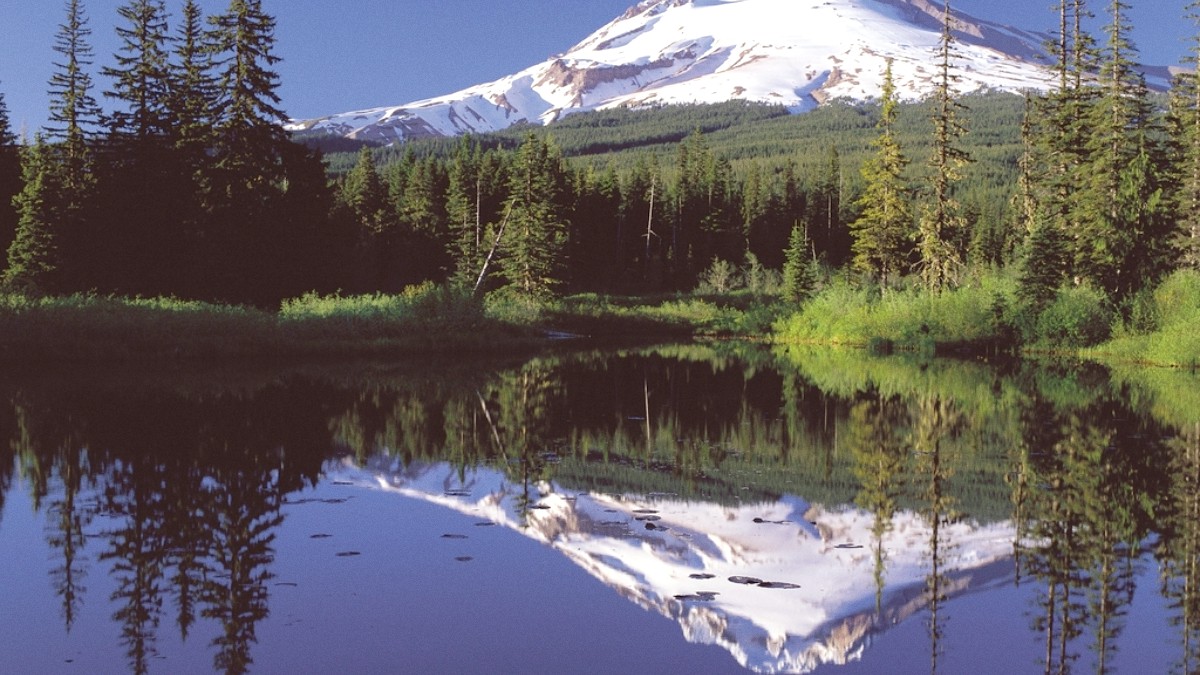
Oregon, USA
Temperatures typically range from 40s to 60s°F (4-15°C). Snow often persists at higher elevations, but lower trails become accessible as the snow melts. Expect moderate rainfall. Spring brings lush greenery and the first wildflowers.
This is the warmest and driest period. Temperatures generally stay in the 60s to 80s°F (15-27°C) in lower elevations, with cooler conditions at higher altitudes. Humidity remains low, creating comfortable outdoor conditions. This period works well for hiking, camping, and water activities.
Late June to early October has optimal trail conditions, with most snow melted and comfortable temperatures.
December to April has optimal snowpack and resort operations. Timberline Lodge often has skiing into the summer on Palmer Glacier. Mid-September to late October is the time for viewing autumn colors, notably along scenic byways and in lower-elevation forests. June to September has favorable conditions for river and lake activities.
Can change quickly!
Always pack layers for sudden drops, even in summer.
High elevation snow can last into July; check conditions.
Late June to Early October
Most snow melted, comfortable temperatures.
Some trails may have lingering snow early or late season.
December to April
Resorts in full operation with abundant snow.
Expect higher costs and more people during holidays.
Experience a more peaceful visit with fewer people at popular attractions and trailheads.
Accommodation and activity costs often decrease during these periods, stretching your travel budget further.
Mountain weather is unpredictable; be ready for anything.
Dress in adaptable layers for changing temperatures.
Verify snow levels on higher trails before heading out.
Some seasonal businesses may have reduced hours or be closed.
Late fall can see early snowfalls at higher elevations.
Mount Hood Territory sits within the United States. Standard U.S. Entry guidelines apply for all visitors.
Learn about visa types and application processes:
Ensure you have these ready for your trip:
Save money with these smart strategies:
Mount Hood Territory is a safe destination, but like any outdoor environment, it warrants preparation and awareness.
No specific vaccinations are needed for travel to Mount Hood Territory (United States).
Recommended vaccinations align with standard childhood immunizations: Measles, Mumps, Rubella (MMR); Diphtheria, Tetanus, Pertussis (DTaP); and Polio. For outdoor activities, especially those involving potential scrapes or cuts, confirm your tetanus shot is up-to-date. Consult your healthcare provider for personal recommendations based on your health history and travel plans.
Mosquitoes are present in forested and wetland areas during warmer months (late spring to early fall). Ticks appear in tall grasses and wooded areas.
Use Insect repellent, wear long sleeves and pants in wooded areas.
Check for ticks after outdoor activities to prevent issues.
Even in summer, mountain weather changes quickly, leading to cold temperatures and rain. This poses a risk for unprepared visitors.
Always carry layers of clothing, especially for higher elevations.
Be aware of sudden drops in temperature and precipitation.
Clackamas County has several well-equipped hospitals and numerous urgent care clinics in towns like Sandy and Oregon City.
Emergency Number: Dial 911 for police, fire, or medical emergencies.
Urgent Care: Suitable for non-life-threatening issues requiring prompt medical attention.
| Area | Concern | Advice |
|---|---|---|
| General | Violent crime is rare. | Mount Hood Territory is generally safe for tourists. |
| Trailheads | Property-related crime (car break-ins). | Lock vehicle doors, do not leave valuables visible, store electronics out of sight. |
| Backcountry | Limited to nonexistent cell service. | Inform someone of plans and expected return time. Consider a Satellite messenger. |